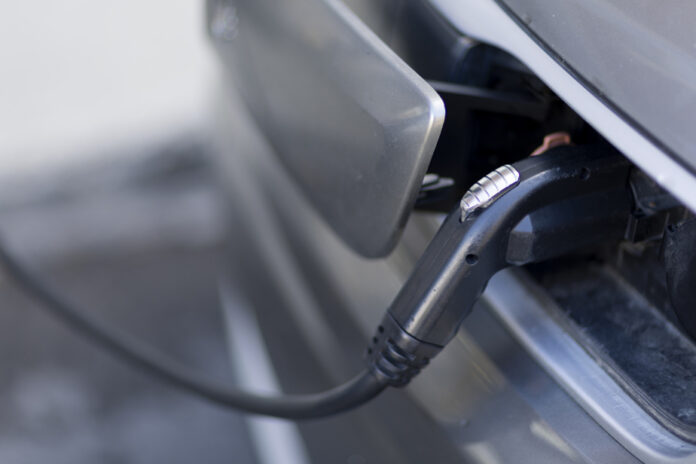Northvolt could get $9 billion in subsidies in the United States and is asking for similar compensation to build its battery cell factory on Montreal’s South Shore, La Presse has learned. If it materializes, this huge complex would lead to the creation of more than 4000 jobs.
These details are contained in a memorandum written to Federal Finance Minister Chrystia Freeland, whose security level is classified as “secret”. Its content testifies to the bargaining power that players in the battery sector have thanks to the generous subsidies offered south of the border.
The document explains that the $9 billion (US$6.8 billion) figure was calculated based on Northvolt’s current production and a production tax credit contained in the Inflation Reduction Act (IRA). This American law has an envelope of 370 billion US dollars in subsidies and tax credits to support the construction of electric vehicles in particular.
“Northvolt has indicated that it expects to obtain similar production-based compensation if the facility were established in Canada,” reads the document prepared last February.
It was not possible to know on Monday whether the projections had since been adjusted. The memo does not offer specific details about the data used to arrive at a potential $9 billion financial backing from the IRA.
The Legault and Trudeau governments declined to comment on the content of the document. The response was similar from Northvolt, which counts BMW, Volvo and Volkswagen among its customers. In a statement to La Presse, the young shoot nevertheless confirmed talks “about potential financial support”.
In addition to grants, the cell maker is negotiating two other forms of financial support. The first is a $1.34 billion “contribution” from Ottawa’s Strategic Innovation Fund – intended to support “important” projects. The other would be aid of 1.4 billion offered by Quebec to support “possible capital expenditure”.
A lithium-ion battery found in a car is in a way an assembly of individual battery units, the cells. They are connected in series by an electronic circuit. The number and size of each cell determines the amount of electricity an electric vehicle battery is able to store.
In the battery industry, cell manufacturing is the last step before assembling a lithium-ion battery found in electric vehicles. This is the missing link in the ecosystem that the Legault government wants to put in place. One thing is certain, there are still several steps to go through in the negotiations before a formal announcement is made.
“Government officials have not yet received a copy of the company’s business plan,” the federal officials wrote.
As revealed by La Presse last month, it is on the land on which the Canadian Industries Limited (CIL) explosives factory once stood, on the border of McMasterville and Saint-Basile-le-Grand, that Northvolt would like to establish. The place is located near a high voltage line, which would facilitate its connection to the Hydro-Québec network, as well as a railway.
The plant would have a capacity of 60 gigawatt hours, which would power 1 million electric vehicles annually. The site would be the equivalent of 100 hectares — more than 75 football pitches — a similar footprint to the cell factory in Norway, which began delivering last year.
Public aid granted to major projects in the battery sector has been in the spotlight since last April. In Ontario, the Trudeau government has agreed to offer up to $13 billion in subsidies to German automaker Volkswagen to convince it to set up shop in St. Thomas instead of the United States. More recently, the Ford government and Ottawa are negotiating with Stellantis in hopes of saving a proposed battery plant in Windsor due to a dispute with the company over financial support offered to it. Unsurprisingly, both levels of government are proposing to put more money on the table.
In Bécancour, the joint venture formed by General Motors and POSCO could receive up to 210 million in subsidies to pay for its cathode materials manufacturing plant, a project estimated at 600 million. On the occasion of the announcement, on May 29, Prime Minister François Legault did not fail to affirm that he expected to see the Trudeau government loosen the purse strings in order to attract a cellier in Quebec territory.
“We hope so and we will work hard to ensure that Quebec is treated fairly with Ontario,” he said at a press briefing, alongside the federal Minister of Innovation, Science and Industry, Francois-Philippe Champagne.
According to the memo, the Trudeau government seemed to want a firmer commitment from Quebec at the start of the year. In a letter dated January 31, Mr. Champagne insisted on a “more equitable sharing of the financial burden” in this file, we learn in the memo.
In the management department of Laval University, Professor Yan Cimon is not surprised to see Canada forced to grant gigantic sums in subsidies while several countries are simultaneously trying to lay the foundations of a battery industry.
“It’s not just the money, but the money is important,” he said. The race is fierce because the positioning is now. We are in the wave. If we wait, we’ll miss our shot. This means that there is enormous pressure to match what the American neighbor can offer. It’s not all rosy, but we’re in the running. We do not automatically get outdone. »
Moreover, in a context where the volumes of available energy are bound to be limited, a cell manufacturing plant, which requires a lot of energy, could not start up overnight. According to the Legault government, the promoters of such projects will have to be patient before obtaining the guarantee that the energy supply will be there.















